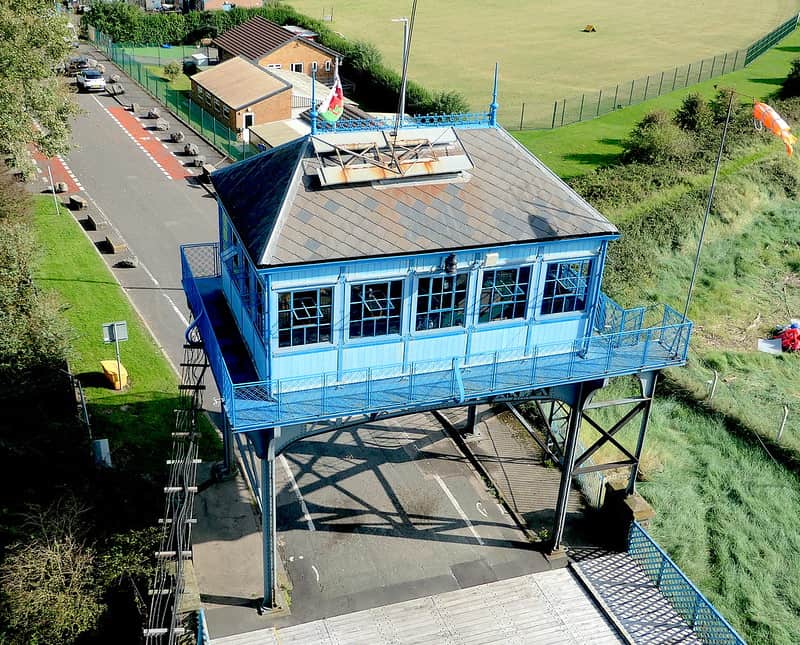There are many things to do in Newport, Wales. The city is located on the River Usk, close to the confluence with the Severn Estuary, 12 miles northeast of Cardiff. As of the 2011 census, the city had a population of 145,700, making it the third-largest local authority in Wales with city status. It is also the seventh-most populous city in Wales.
Caerleon Roman Fortress and Baths
The Caerleon Roman Fortress and Bath in Newport Wales is a site that is a must-see for anyone visiting the area. This ancient fortress was originally occupied by the Romans, and during their reign there were many developments in the area, including an exercise facility and bath house. A replica of these facilities can be found in the Roman Baths Museum, which features interactive computer games and ancient remains, such as a frozen footprint.
Almost three-quarters of the fortress has been buried under the village of Caerleon, but you can still see three major relics. The amphitheatre was around ten feet high, and it had eight entrances. The bath house and frigidarium, which have undergone extensive restoration, are also on display. Visitors are free to explore these structures, which are now a popular destination for tourists.
Another highlight is the Roman Amphitheatre, located just a short walk from the town’s high street. Sadly, the Roman Amphitheatre is currently closed due to heavy rain, but you can still see its impressive foundation. Built in AD 70, the amphitheatre was originally designed to entertain soldiers during downtime. The Roman Barracks are located on the foundation level.
Tredegar House
Tredegar House was built in the early sixteenth century and was home to the powerful Morgan family, who were later known as the Lords Tredegar. William Morgan, a wealthy merchant, substantially rebuilt the house between 1664 and 1672, creating an ornate, red brick mansion in the Carolean style. The architect of this building is unknown, but the house still features oak panelling, carving, ornate plasterwork, and gilding.
In 1951, John Morgan sold the house. The Newport Borough Council purchased it and opened it to the public in 1974. In March 2012, the National Trust took over the management of the mansion. The house’s parkland and gardens are part of the property, and are free to visit. The grounds also have craft shops. During the summer, visitors can take a walk through the house, explore the parkland, and shop for souvenirs.
The property also houses several historic buildings. The Tredegar Stables, Orangery, Mill, Great and Lesser Barn, and Doctor’s House were all used as filming locations. Last year, the National Trust acquired the property and restored its ceiling to its former glory. The restoration project cost PS5,000 and lasted until the house is fully restored. Throughout the year, visitors are invited to attend special events and participate in activities.
Newport Transporter Bridge
One of the most famous symbols of the town is the iconic Newport Transporter Bridge, which was used in the millennium celebrations to showcase a spectacular fireworks display. The bridge is also home to a visitor centre on its west bank, with exhibits detailing the history of the bridge and other transporter structures around the world. It is an essential stop for walkers and cyclists alike. To see the entire bridge in person, plan a day trip to Newport.
If you’re looking for some history in the area, don’t miss the Caerleon Roman Fortress and Baths. This historic complex is located four miles northeast of Newport, on the ruins of a fortress dating back to AD 75. You can walk around the ruins of this ancient structure and see remnants of ancient architecture, including the ancient amphitheater and open-air bathing pool. Another popular attraction in the area is the Fourteen Locks Canal, an engineering marvel. Originally built in 1799, the canal was built to control the flow of water in the area.
Belle Vue Park
If you are looking for a Victorian public park to visit in Wales, then look no further than Belle Vue Park. Located in the west of Newport, this park was awarded the Green Flag Award in 2008 and has since retained this status. You’ll be sure to enjoy a picnic in this park – its Victorian-era buildings and ornamental pond have been restored to their original beauty. The Victorian-era park has been a popular destination for visitors in South Wales for the past century and has been popular for its family fun activities.
The first sod was cut for the park in November 1892 by Lord Tredegar. Construction commenced in 1893 and the park opened on 8 September 1894. At the time, the park cost PS19,500 to build. The park was further improved in 1896, when the Gorsedd Stone Circle was constructed for the National Eisteddfod held there. In 1904, the park was extended with a bowling green and a tea house. In 1924, the park was taken over by the council and now covers more than 26 acres.
Wentwood Forest
The Wentwood Forest is a 2,500 acre ancient forest in South Wales. The Woodland Trust, which manages the property, recently discovered a fungus that is devastating larches. The disease, known as Phytophthora ramorum, has caused extensive damage and even death. To save the remaining trees, the trust is clearing 500 acres and replanting them with native broadleaves. Many of these trees were planted in the 1940s and 1950s as a means of producing timber. However, the conifers also contributed to the dense shading and soil disturbance associated with the disease.
Wentwood Forest is home to several types of wildlife, including deer, nightjar, dormice, and bats. It is also home to bee orchids and adders. You can even try your hand at mountain biking in the lower reaches of the forest. And as the largest ancient woodland in Wales, the Wentwood forest is also home to wood ants with nests three to four feet long.
Newport Medieval Ship Project
The merchant vessel found in 2002 in the city is one of the many attractions of Newport, Wales. Built in the 1400s, the vessel is a popular tourist attraction with an educational focus. Today, visitors can explore the ship by board the original replica. It is open for tours, and the museum provides information on life during the Middle Ages. Visitors are encouraged to ask questions and learn more about the ship’s history.
The ship’s timbers have been excavated, and ninety per cent of its wood has been preserved. The team of archaeologists working on the site have made extensive use of FaroArm technology, a portable coordinate measuring machine with RHINO software. This technology produces 3-dimensional rotatable images of individual timbers, allowing researchers to examine them in great detail and record any damage to them. The team behind the project was the first marine archaeological project to use Faro equipment.
The ship has been a controversial topic in the city since its discovery, but the Friends of the Newport Medieval Ship Project have been advocating for a permanent location for the vessel. The city’s shopping centre could be a good choice. While a permanent home for the ship is still being considered, it is likely to draw between 100,000 and 150,000 visitors per year and generate a PS7 million economic boost for the city. The ship is the only surviving medieval vessel and would have sailed the oceans centuries ago.
Newport Museum and Art Gallery
The Newport Museum and Art Gallery is a library, art gallery, and museum in Newport, South Wales. Located on John Frost Square, it is adjacent to the Kingsway Shopping Centre. Visitors are welcome to explore all of the exhibits and exhibit spaces. They are free of charge, but you may have to pay to use the library and exhibition spaces. Listed below are some of the highlights of this venue. We’ve compiled a list of the top things to do while you’re in the area.
The Newport Museum and Art Gallery has been collecting evidence from the area since 1888. Its permanent collections tell the story of the town from prehistoric times to the present day, including some special exhibitions and temporary shows. Visitors are also encouraged to take part in public protests by signing petitions and delivering letters to local politicians, who signed the closing order. The museum is also home to the city’s Central Library, which houses a vast collection of books and serves as the headquarters of the city’s library network.

